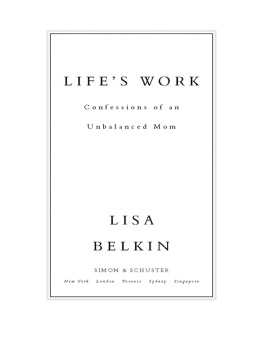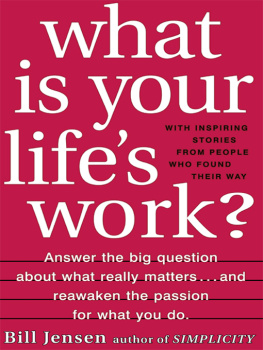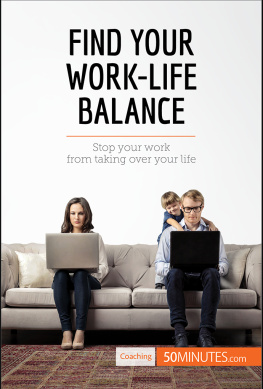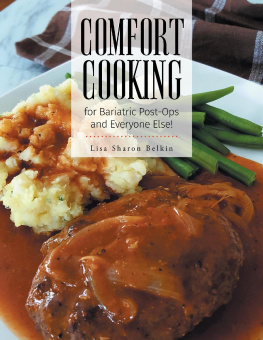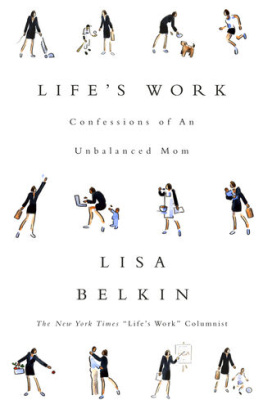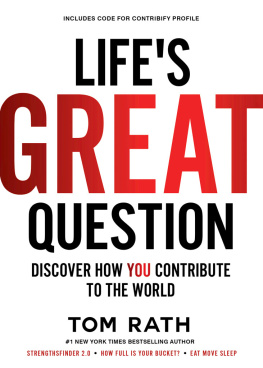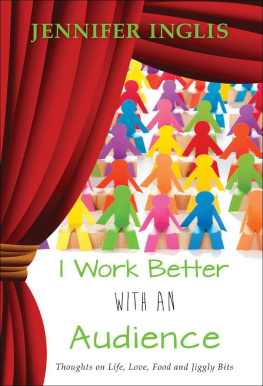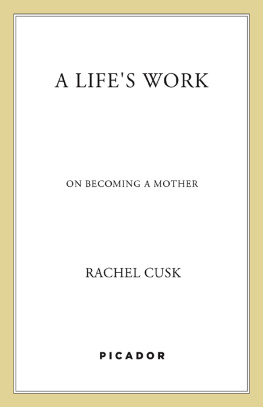
SIMON & SCHUSTER
Rockefeller Center
1230 Avenue of the Americas
New York, NY 10020
Copyright 2002 by Lisa Belkin
Illustrations 2002 by Elisha Cooper
All rights reserved,
including the right of reproduction
in whole or in part in any form.
S IMON & S CHUSTER and colophon are registered trademarks
of Simon & Schuster, Inc.
Visit us on the World Wide Web:
http://www.SimonSays.com
ISBN-10: 0-7432-2895-2
ISBN-13: 978-0-7432-2895-4
The columns on which much of this book is based originally appeared in The New York Times, and to the extent they are reprinted here, they are reprinted with permission. The New York Times owns the copyright to the columns that were published in the newspaper.
INTRODUCTION
I used to think that life was linear. A straight line, from A to Z, mailroom to CEO, the first day of work to the gold retirement watch. You decide what you want to be and then you make a beeline in that direction. Simple.
I also used to think that life could be balanceda word that I have come to hate. It sounds like some sort of tantric yoga position, a contorted pose that others on the mat can do because they are really trying. As you might have guessed, Im not very good at yoga.
This book is the story of how I gave up on straight lines; how I learned to zig and zag, to leapfrog and jump backward. Its also the story of how I gave up on balance and decided to settle for a close approximation of sanity, instead. (Disclaimer: I have not actually attained sanity yet, but am ever hopeful.)
There was a time when I didnt think about any of this. I was single in Manhattan back then, a brand-new reporter at the newspaper of every reporters dreams. I spent all available moments at the office without feeling that I was giving up any part of my life. This job was my life. Then I met Bruce, and the office didnt seem quite as interesting anymore. A doctor-in-training, he was moving to Houston months after we met to complete a four-year fellowship program. I knew nothing about Houston, except that it was hot and I hate the heat. In a decision that was anything but logical or linear I quit my dream job at The New York Times, married a man Id known for less than a year, and moved to Texas.
New city. No job. A new husband who not only worked all day, but sometimes all night. The best way to meet new people, Id learned, was to interview them, so I began freelancing for the newspaper Id just quit and stumbled into the best professional experience of my life. I discovered that I was jazzed by a kind of work I had never had a chance to trydashing around the state, using Southwest Airlines as though it were a taxi service, hopscotching from one story to the next. I learned I had a knack for longer, more thoughtful writing, too. I wrote some of my first magazine articles while in Texas, and my first book.
But the most important things I learned didnt become clear until I had returned to New York, to a full-time job in the newsroom, with my husband and three-month-old child in tow. The first lesson Texas taught me was that editors dont have to see you in order to edit you. I had answered copy desk questions from pay phones from Lubbock to Brownsville, and it made no difference where I was. This was back in the dark ages, when cell phones were the size of those crank-up models used in the Korean War and only a few show-offs carried them around. But I insisted on one and smugly sat on the train each evening at six instead of seven, answering questions from the copy desk in a rolling extension of the office.
When I became pregnant with my second son three years later, I decided to leave the paper completely. It was a decision that made as little sense as my decision to move to Houston, but one that made me just as proud of myself. Look at me, I crowed silently. Arent I just the essence of modern motherhood? Ill freelance from home. Ill write another book. Ill nurse my newborn with one hand and type an article with the other hand, all while a nutritious family dinner simmers on the stove.
I certainly used both my hands. The problem was, I needed four or five more. I had changed the location of my juggling act, but not the juggling itself. Here are just a few of the highlights, seared forever into my memory:
- My first day as a work-at-home-mom. I pulled on my sweats (which was, after all, the point of this entire plan) and shuffled downstairs for breakfast with my son. Then I kissed him sweetly on the top of his head, handed him to his baby-sitter, and said brightly, Mommy is going upstairs to work now. Thats when he began to wail. He shrieked outside my office door for the better part of two days, not understanding why Mommy was home but was not his. On the third morning, I pulled on my panty hose and a suit, kissed him again, then drove to the nearby diner for a cup of coffee and a muffin. After about an hour, I snuck back into my own house and went to work.
- The frantic morning when the baby-sitter was sick, and we were at a crucial potty-training moment. So I moved the boy, the potty, and the job-well-done stickers into my office, where my interviews with Very Important Sources were periodically interrupted by squeals of Mommy, I have to pee.
- The afternoon of the yearly doctor checkup, this one a visit requiring shots. I had promised I would be therewhat is the point of working at home if you cant make it to the visits that include shots ?but it turned out that a magazine story Id written was closing at exactly the same time as the doctors appointment. So I sat on a chair in the waiting room, my nervous little boys head on my lap, and the magazine galleys draped over him as I scribbled changes, then phoned them in to the copy desk.
Since I am such a healthy example of balance, the editors of the Times asked me to write a column. We called it Lifes Work, and what you are about to read includes many of the columns I think say it best, along with lots of new material about what I learned while writing all those columns. Think of the columns as the pineapple, and the whole of my life story as the Jell-O. Ive kept each chapter short because, if youre like me, theres only time enough to read a few pages between sliding into bed and collapsing into sleep.
My editors say Lifes Work is about the intersection of life and work. I say it is about the collisions that happen daily at that intersection. Either way, the subject appealed to the many parts of my fractured self. The reporter in me understood that this emotional and economic tug-of-war is the central story of our generation. And the conflicted parent in methe one who thought working from home would be the solution but found it only created different problemssaw a chance to get advice. I envisioned Lifes Work as a kaleidoscope of voices, sometimes mine, often strangers I met along the way. It would be an ongoing conversation on the page, and maybe it would offer me some answers. So please feel free to talk back to the book. Thats part of the point.
We reporters always believe we will change the world through our work, when the truth is our work inevitably changes us. My first columns reflected my life; soon they began to shape my life. I did find answerssurprisingly simple answersbut they were not at all what Id expected theyd be. In part they came from noticing truths and shadows in my world that had been there all along: the intricate legacy of work, for instance, that my family had passed down through the generations and which was an unseen hand behind choices Id thought were uniquely my own.

